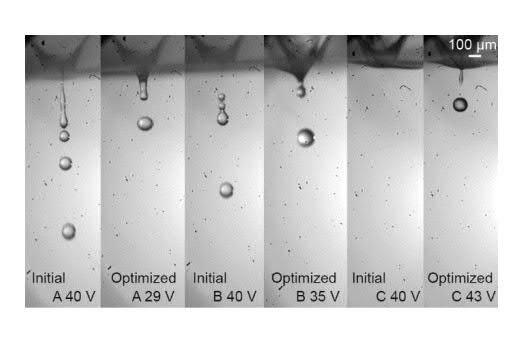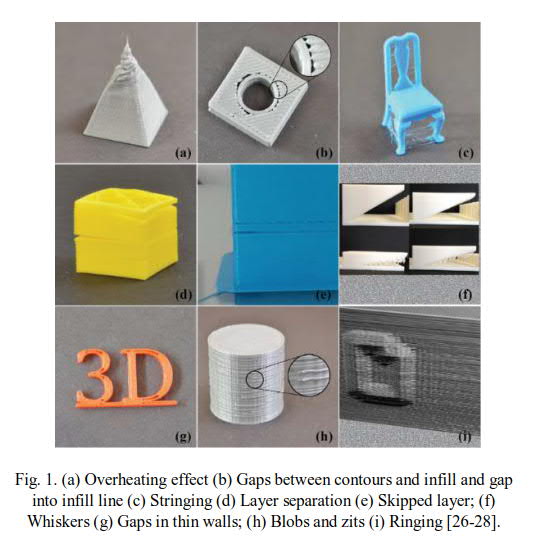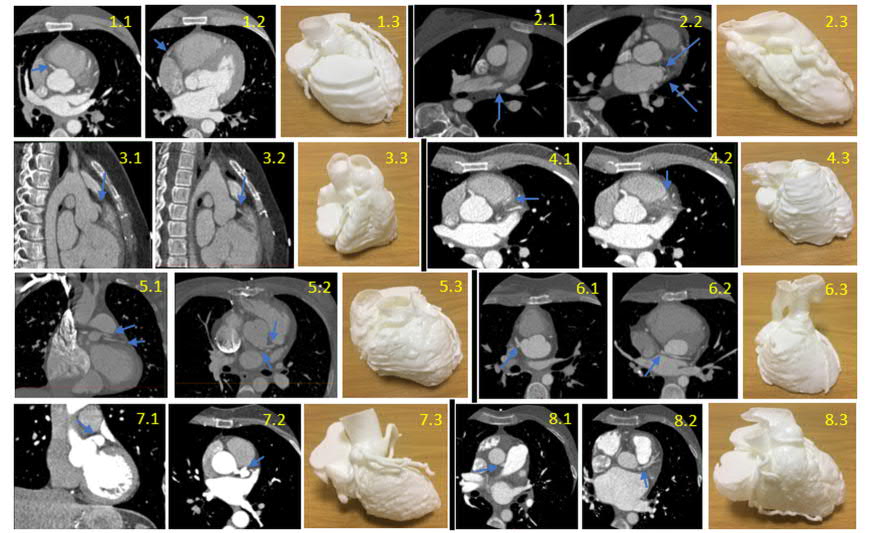In this edition of CraAMed, we see how researchers are reviewing, and improving 3D printing processes including 4D printing and 3D bioprinting. New applications are also explored, leading down new avenues in drug screening, and important discoveries from beneath the ocean.
The challenges of 4D printing, and microfluidic LEGO
University of California, Berkeley researchers have published a review of 4D printing, which characterizes various smart materials and their applications in the fields of medicine, soft robotics, and self-construction structures. The review also discusses the future of 4D printing and current challenges against the progression of technology, including “the limitations of current 3D printers to address fundamental 3D printing issues” such as support-free structures.
“Developments in 4D-printing: a review on current smart materials, technologies, and applications” is published in the International Journal of Smart and Nano Materials.

At Brown University, Rhode Island, researchers have devised a way to 3D print self-adhesive hydrogels. In a study titled, “3D printed self-adhesive PEGDA–PAA hydrogels as modular components for soft actuators and microfluidics“, the researchers designed a set of modular hydrogels that react to external stimuli and change shape. A self-actuating soft gripper and a LEGO-like hydrogel building blocks were developed for the study.
Thomas M. Valentin, a biomedical engineer and co-author of the paper, explained, “The modular LEGO blocks are interesting in that we could create a prefabricated toolbox for microfluidic devices.” Valentin goes on, “You keep a variety of preset parts with different microfluidic architectures on hand, and then you just grab the ones you need to make your custom microfluidic circuit. Then you heal them together and it’s ready to go.”
Furthermore, Ian Y. Won, assistant professor of engineering and co-author of the paper, said, “There’s a lot of interest in materials that can change their shapes and automatically adapt to different environments,”
“So here we demonstrate a material the can flex and reconfigure itself in response to an external stimulus.”

Optimization of droplet on demand and FFF technology
In a roll-to-roll process of manufacturing electronics, defects such as bridging and hollowing can occur. To counter such problems researchers at Sandia National Laboratories and the University of New Mexico has 3D printed metamaterials and porous stamps for ink deposition. This prevents excess amount of ink from being deposited.
“Architected Porous Media Designed for Flexographic Printing” won Best Poster at the Materials Research Society (MRS) Fall 2018 meeting.

Using the multi-objective optimization technique, researchers from the National University of Singapore and Northeastern University, attempted to optimize Drop-on-demand (DOD) bioprinting. According to the paper, “Multi-Objective Optimization Design through Machine Learning for Drop-on-Demand Bioprinting“, two of the basic obstacles to DOD bioprinting’s adoption are the low speed of droplets, and the size of droplets, which is too large. Fully connected neural networks were used to solve these problems. “This paper,” state the authors, “proposed an effective multi-objective design optimization method for optimizing piezoelectric DOD printing parameters to print droplets with a smaller droplet diameter and faster droplet speed, without satellites.”

Elsewhere, seeking to subvert the 3D Benchy, Polytechnic University of Turin researchers have designed a benchmark test for FDM/FFF 3D printed parts. The purpose of the test is to develop a standard by which the appearance of the 3D prints can be evaluated. It identifies the most common problems that occur in FDM/FFF printing, such as stringing, blobs and zits, gaps between contours and infills, and layer separation and layer skipping among various other. Such problems might not always affect the mechanical properties of a part. But the researchers believe that if 3D printing is to become more common, a measure of ‘aesthetic’ appearance of 3D printed parts is important. A special reference part and an indicator called the Aesthetic Quality Index (AQI) was created.
“This work presented a preliminary study for the evaluation of the aesthetics quality of 3D printed parts,” explain the authors. “A reference part was designed with the aim of stressing the limit of the layerwise process by being representative of all typical 3D printing defects.”
“Moreover, a benchmarking methodology was developed to quantitatively evaluate the aesthetic quality of 3D printers through the proposed reference part.”
“A methodology for evaluating the aesthetic quality of 3D printed parts” ic published, open-access, in Procedia CIRP.

In another effort to improve FDM/FFF printing Eric Wooldridge, a Somerset Community College professor and engineer, shows how solid objects can be filled with micro-sized holes during the design process, to create much stronger parts as compared to infill-based components. Wooldridge calls such micro-structures Phantom Holes (PH).
According to Wooldridge, “In initial shear and flexural testing, the PH technique resulted in a 39% improvement in specimen loading performance over specimens fabricated with higher infill percentages.”
“Phantom Holes: Optimized Internal Structural Design For Use With Additive Manufacturing, Typical Fused Filament Fabrication Systems” is to be published in the International Journal of Rapid Manufacturing.
Ejected particles
Ejecta are particles thrown out after an event like an explosion or high-temperature impact occurs. In powder bed fusion methods, ejecta larger than the particle size of the raw material have been observed. However, so far their effect on the geometrical properties of a 3D printed metal part has not been studied.
In a paper titled, “Formation processes for large ejecta and interactions with melt pool formation in powder bed fusion additive manufacturing“, Pennsylvania State University researchers study the origin of ejecta in powder bed fusion metal 3D printing.
The authors state, “Evidence of interference of large ejecta with melt pool formation are also reported. Such interactions between large ejecta and the melt pool are shown to significantly perturb the intended track geometry in one of two ways. Ejecta can shadow or block the laser beam then be expelled from the laser-interaction zone, or can be incorporated into the melt pool and, under some circumstances, perturb the intended track geometry.”
“It is argued that either mechanism may lead to lack of fusion and may explain the observation of stochastic (i.e. random or rogue) defects in PBFAM.”
All the experiments in this study were carried out on a ProX-320 machine by 3D Systems.
Protecting the heart
In the UK, University of Bristol, University Hospitals Bristol, Great Ormond Street Hospital for Children and the University of Verona carried out a survey to evaluate the viability of 3D printed models of the heart. Containing anomalies in the coronary, yhe models were based on cardiac CT data and 3D printed on a Form 2 3D printer.
According to the authors, “3D printed heart models can be feasibly used to recreate coronary artery anatomy and enhance understanding of coronary abnormalities. Future studies can evaluate their cost-effectiveness, as well as potentially explore other printing techniques and materials.”
Full results are published online in “Evaluating 3D-printed models of coronary anomalies: a survey among clinicians and researchers at a university hospital in the UK,” BMJ Open.

Knockout research applications
Using a resin-based 3D printer Dr. David Staack and Xin Tang of Texas A&M University¸ replicated the claw of a shrimp. By doing this they were also able to create the mechanism by which the shrimp generates a plasma by snapping its claw.
The snapping shrimp is one of the loudest animals in the sea. When its snapping claw shuts it creates a cavitation bubble with an acoustic pressure of up to 80 kPa. The bubble extends from the claw and reaches a speed of up to 100 km/h and sound of 218 decibels, strong enough to kill a fish.
Dr. Staack explained, “In our paper, we report the first direct imaging of the light emission induced by the same method the shrimp uses: the mechanically generated energy focusing on a collapsing cavitation and the following shockwave propagation.”
“The bio-inspired mechanical design allowed us to carry out repetitive and consistent experiments on the plasma generation and indicate a significant increase in conversion efficiency compared to sonic, laser and electric induced cavitation.”
“Bioinspired mechanical device generates plasma in water via cavitation,” is published in Science Advances.
And finally, using 3D printing and simulation techniques, researchers at Yasar University designed and built a prototype of a conical horn antenna for use in Ku-band satellite communication. The antenna was designed to operate within 10.5 and 18.5 GHz frequency.
In the paper, “The Prototype of a Wideband Ku-Band Conical Corrugated Horn Antenna with 3-D Printing Technology“, the makers of the antenna argue, “The proposed fabrication technique has the advantages of low weight, low cost and low production time as compared to CNC-based production in spite of the slight loss in the gain.”
“As a conclusion, 3D printing and coating method is very useful especially for research and prototype verification in antenna and microwave systems.”
Vote for your Research Team of the Year in the 2019 3D Printing Awards. Subscribe to the 3D Printing Industry newsletter for more research updates, and join us on Facebook and Twitter for live posts. Visit 3D Printing Jobs for the latest vacancies in academia and industry.
Featured image shows CrAMmed logo over an illustration of expulsion of multiple neighboring particles and their collision to form an agglomerate. Image via Scientific Reports “Formation processes for large ejecta and interactions with melt pool formation in powder bed fusion additive manufacturing.”


